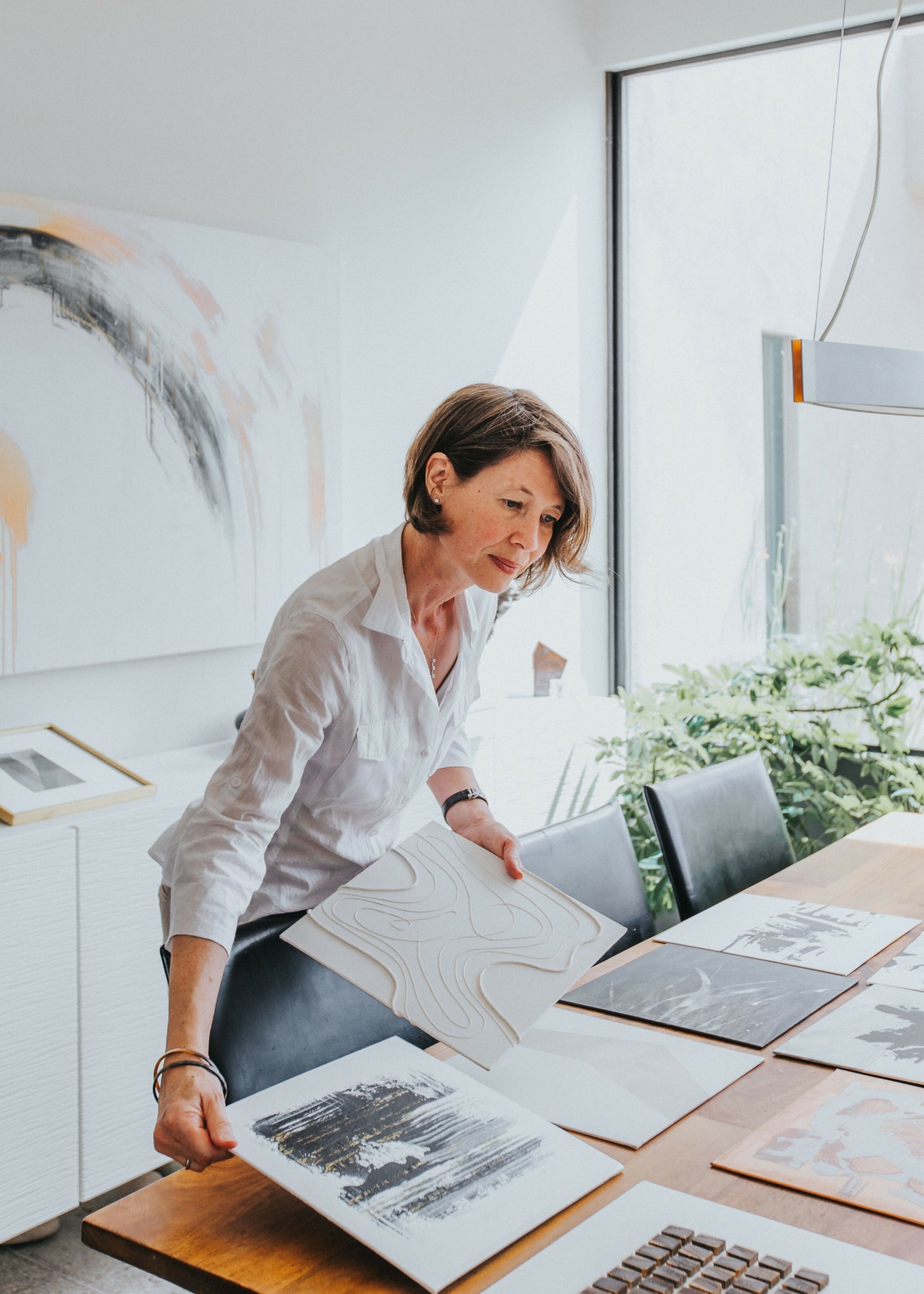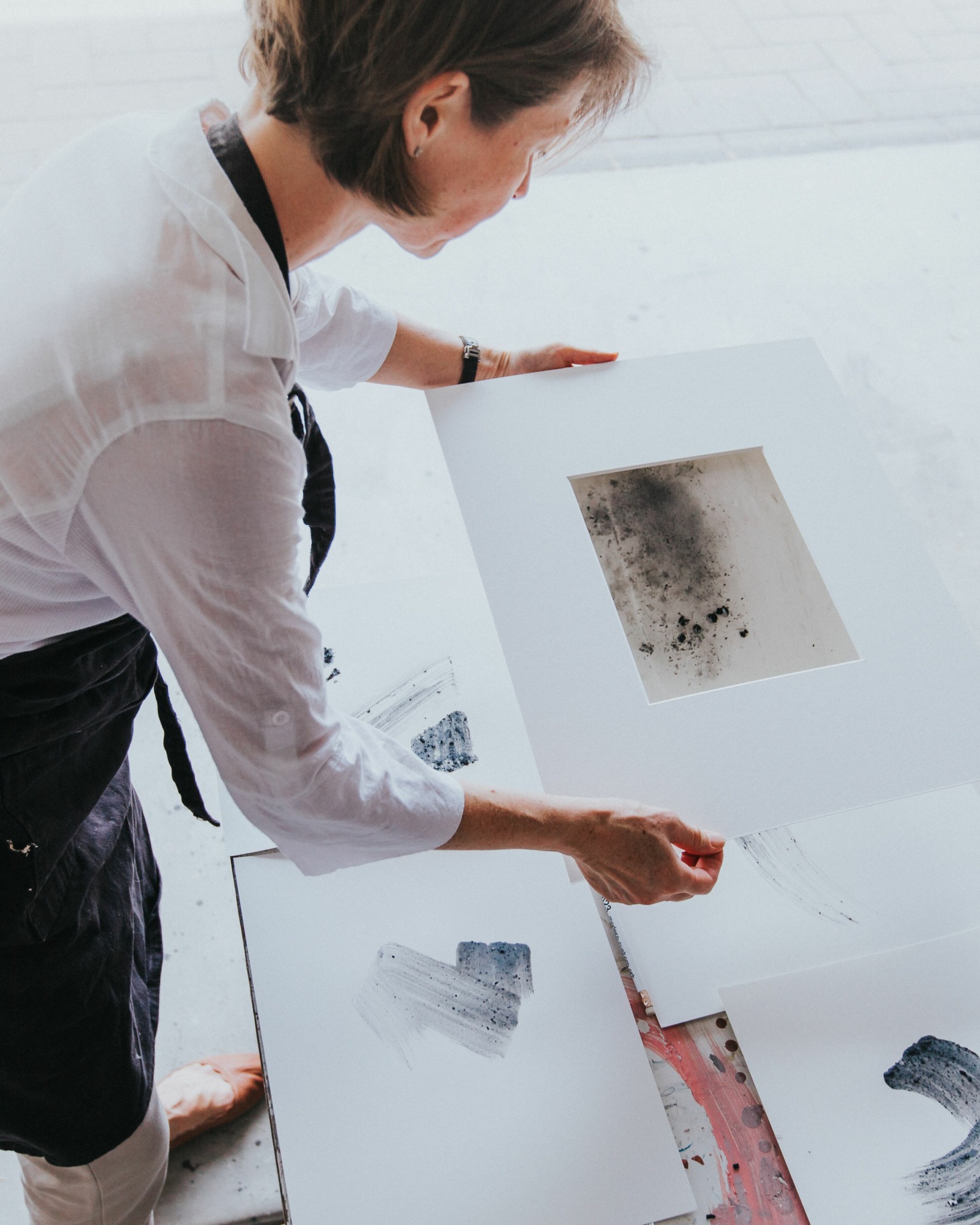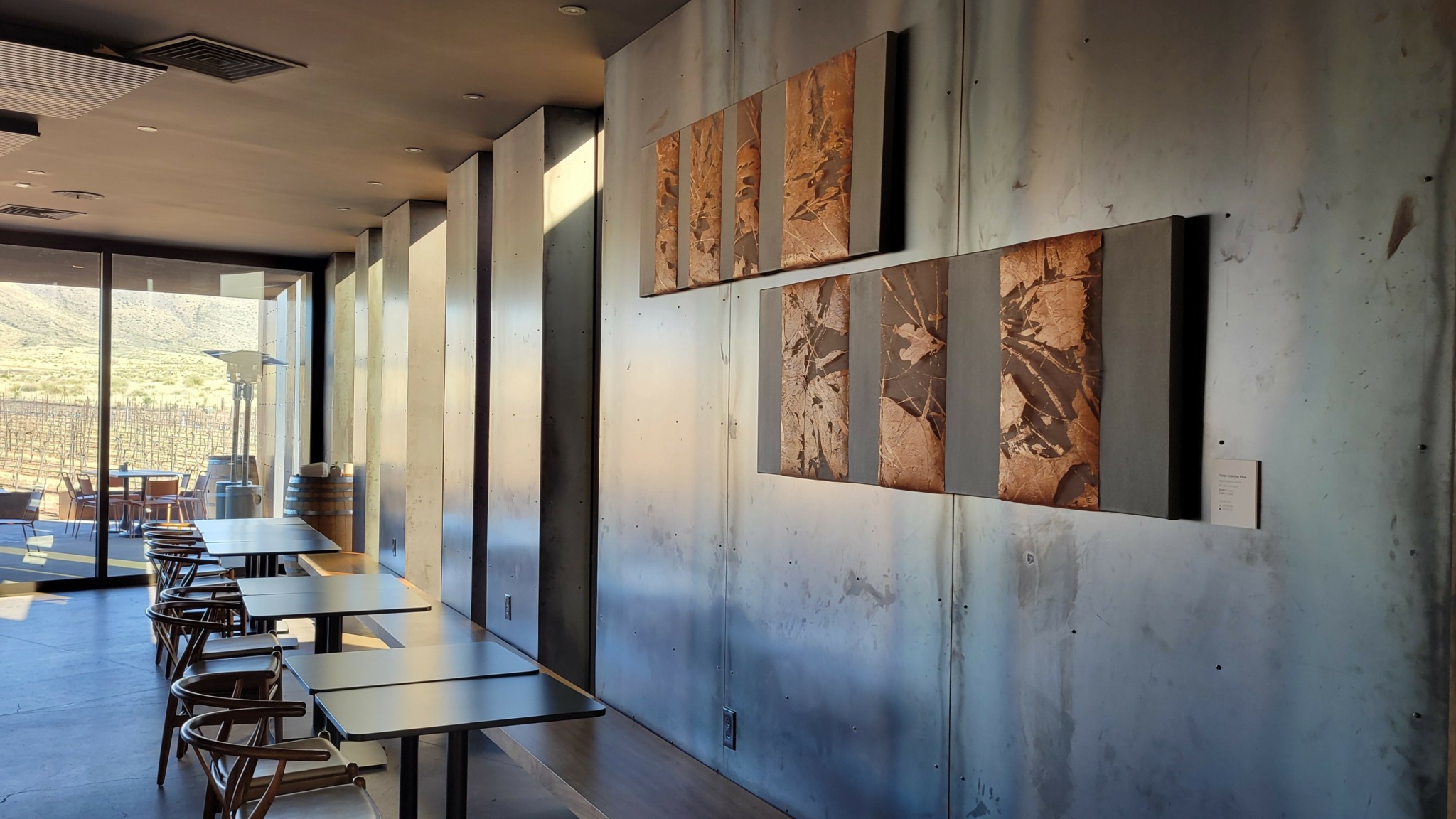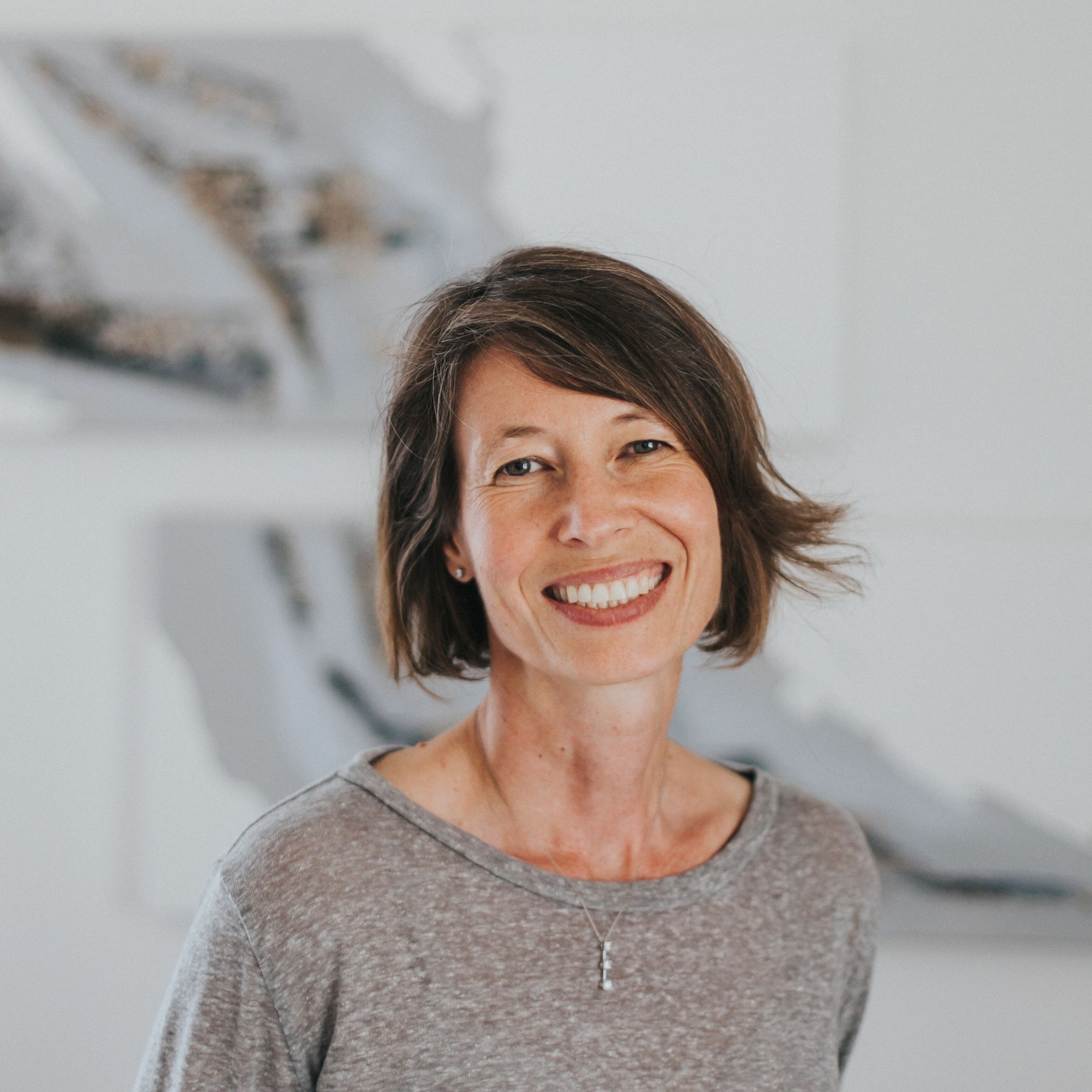We’re excited to introduce you to the always interesting and insightful Tanja Caterina Eltze. We hope you’ll enjoy our conversation with Tanja Caterina below.
Tanja Caterina , appreciate you joining us today. Do you wish you had waited to pursue your creative career or do you wish you had started sooner?
As far as I can remember back, I was interested in art and design and I was always creative. The love for art was fostered by my parents, who took me to museums at a young age. I was by far the youngest child in our family, so by the the time I was around, they were pretty much done with the kids’ stuff. But these early art and design museum visits lit a fire. So I drew and painted, I crafted dresses for my dolls, I came up with new letter-designs for my school notebooks and I did an internship with a graphic design studio to draw and design the posters for our school play. However, when it was time to go to college, I chose a school that would allow me to combine my other interest – business – with my love for design. For ten years, I was first a trainee in conjunction with college, and then working for the international fashion house HUGO BOSS AG at their headquarters in Germany.
So now, that I have my own art business, I sometimes question myself if I should have pursued an art degree and wonder what would have been different.
Not having this formal art education (at least not in the traditional art school format), gives me immense freedom. I was not taught what I cannot or shouldn’t do, so I experiment on a smaller scale. Yes, this sometimes leads to results I don’t like – which is a learning experience in itself, and sometimes it leads to results that I find fascinating and that are completely new. In the past years, in addition to painting with mostly acrylics and charcoal, I have grown my own rust to work with, I have created a technique for three-dimensional wall-hung pieces, I designed metal outdoor art, and I am using our local Sonoran desert woods that are extracted from decaying cacti, as a modern art medium. We also have built canvases that are curved or irregular, to fit the wall space perfectly.
I also find that all the experiences I had before I started my art career are what prepared me for the work I am doing now in a unique way. Many artists don’t like doing art commissions. This is my niche, and I credit my years as a project manager at HUGO BOSS with preparing me for that challenge. I love talking to my art clients, finding out which of my unique and modern art techniques they are drawn to, coming up with a plan that enhances the space, and ultimately create the art piece for them that they love.
As always, we appreciate you sharing your insights and we’ve got a few more questions for you, but before we get to all of that can you take a minute to introduce yourself and give our readers some of your back background and context?
At what exact moment did you decide to make art your profession?
It was after we moved to Tucson, Arizona! I felt an immediate connection to nature here, that really inspired me.
We also built a modern house, together with an amazing architect, who spoke the same design language that I did.
This motivated me to pick up the brush more frequently, and when I shared a few of my newest art exploration pieces with him, and he bought six of them, I realized that there are people out there who are very successful in the design world, who appreciate my style and my work.
I then painted art for our new house , which then was featured in a home tour for architects and also in a feature article in Tucson Lifestyle Home & Garden magazine. After that, I was ready to help everyone else who loves modern art.
How would you describe your style?
I describe my style as modern organic. Almost all of my pieces are abstract. I like to use a limited number of colors per painting and sometimes the composition is minimalist. Often my pieces have an organic quality to them, like a subtle pattern that could be found in nature. Combining that with a simple but balanced and beautiful composition is what really lights me up.
Why are you painting abstract art?
Not only do I happen to find abstract art really beautiful when done well, I also like the aspect that I don’t prescribe what the viewer has to see! I find that it reflects what the life experiences were that my clients bring along. I have shown some of my samples to different people and they all see something different in it.
Something that reflects their unique life experiences. One client saw a coral in his painting, which reminded him of his beloved diving trips he used to do.
Your business name is moca23. How did you come up with that?
Moca23 stands for modern custom art, which describes well what I am doing, while the ratio 2:3 is a balanced one. But of course I also used the number to distinguish myself from the museum of contemporary art.
What is the biggest challenge and reward of creating custom or commissioned art pieces?
The biggest challenge is that the client cannot see the finished piece when making the decision to go ahead with the project. I mitigate that by working with an extensive library of technique samples. These are smaller canvases, that show a certain composition, technique, style or colors. We use those as a visual aid to describe the finished piece. If there exists no sample yet, that comes close to the idea of the finished piece, I will create a new sample piece before the client makes a decision.
Despite that, the finished piece will not look exactly like the small sample piece, as there is an artistic process involved, and because I keep the client’s space and story in mind while working on the art.
Because of this, good communication with the client is very important. I invite them to share their opinion if there are several options in the creative process and definitely invite the client to come see the art before it is finished.
I will not stop before the client loves the piece. If the client is out of town, this can be achieved via photography and online meetings.
The reward is that I am able to create a piece that will not only be liked by the client, but also fits the space perfectly. I take into account the architectural style, the interior design, the energy of the space and the wall space that is available. So often, I see photos of gorgeous rooms where the art overlaps with architectural details, or the size doesn’t work in the space. That is very sad to see and gave me the idea to specialize in commissioned pieces.
But the ultimate reward is seeing the smile on the face of the client or collector when they receive their new art and to hear what they think about it!
What is a challenge of working so closely with your clients?
In general I absolutely love working with my clients and am very thankful to my clients for allowing me to do what I love.
Most of the time I work with a couple and sometimes they have very different opinions of what they want, which is why they haven’t found any art pieces that they can agree on. I did develop some strategies, that have allowed me to find a solution each time so far while listening to both of the partners.
What do you do if a client needs a piece immediately?
We do have a showroom in Oro Valley, Arizona where several pieces are displayed, that are for sale immediately. You can arrange for a visit by calling or emailing moca23.
Do you work with local clients exclusively?
No, I work with homeowners, business owners and interior designers wherever they are.
Last year, I was shipping a piece to Manhattan to a client who had seen some pieces of mine at an airport exhibition. Since they couldn’t be removed until the end of the 6 month show, we agreed on creating a commissioned piece for him, that worked even better for his stunning condo on Madison Ave, than the pieces he had seen prior. I was especially happy about that order, since the client was living in the epicenter of the art world and was an international art collector.
You mentioned that your professional background was in business. How has that benefited you as an artist?
As a professional artist, you are also a business owner.
Immediately from the start, I became very clear on how I wanted to run my business.
I identified my guiding principles as Quality, Honesty and Respect.
First and foremost is the quality of the art I am creating. The art needs to pass my own quality test, and then it needs to pass my clients’. I will not stop before this is achieved, no matter how long that takes.
Honesty in my opinion is the basis for trust and trust is the foundation for my business.
And the third principle is love and respect for my clients.
These principles have served me very well over the years.
The fact that I was a project manager for HUGO BOSS is also very helpful, as every order is a project where communication and timing are important.
Are there any new developments that are exciting?
I recently became the artist for Los Milics Vineyards and their award winning tasting room in Elgin, AZ, that was voted second best in the U.S. I am very thankful and excited about that partnership. Not only are their Arizona wines very, very good, but the ultramodern architecture by Chen + Suchart Studio is absolutely breathtaking and aligns very well with my taste. My pieces can be found in the main tasting room and the private dining room. You definitely have to check out this place when in Arizona. They also have a restaurant for bites that pair well with their wines, and cabins where you can stay overnight.
I am also working on a second partnership with a prominent architecture firm. More details to be released, soon!
What do you find most rewarding about being a creative?
The most rewarding aspect for me is to bring beauty into people’s lives. May that be their home or place of business. I think original art really enriches someones experience. It can also change the energy of a place and therefor the energy people experience when they are in the space. There are studies that show that there are less murders in spaces that are beautified. Not that I think that my clients would murder someone if they didn’t own my art, but it shows how a beautiful environment really affects people’s well-being. Knowing that I get to play a small part in that well-being brings me a lot of joy, especially as I have the privilege of knowing my art clients.
Since I work directly with my clients, I am also in the position to offer them lower prices than they would find in a gallery, so I am reaching more people. I find that rewarding as well.
Is there something you think non-creatives will struggle to understand about your journey as a creative?
What have you learned during your years of practicing art that could benefit newer artists?
I learned that art making is rarely a linear process. Your art goes through “ugly” phases, which is normal. You engage in that dance of stepping away and coming closer to see different aspects of the composition, each time making adjustments until there is no longer anything that bothers you about the piece.
Also creatives need discipline and a schedule.
New ideas come from working, not from waiting.
The more you create, the sooner you find your style.
Don’t overwork your piece. There is an art in knowing when to stop.
Don’t be scared of making a mistake. Most often, there is a way to correct it – given that you are not a sculptor working in stone.
Tune in to your intuition.
Don’t be scared to be different. The world doesn’t need more of the same art.
You are your highest critic. Your significant other’s opinion doesn’t matter.
Look at your art in a different room, under different lighting and wait a while before you decide it is finished.
Gerhard Richter, German visual artist, looked at his finished pieces for a month before deciding if he liked them. If not, he would cover them in gesso and start over!
Contact Info:
- Website: www.moca23.com
- Instagram: www.instagram.com/art_moca23
- Facebook: www.facebook.com/art.moca23
- Linkedin: https://www.linkedin.com/in/tanja-eltze-68b3b064/








Image Credits
• Alexandra Yarborough Photography (all portraits and pic with the art next to chair in front of white wall)
• Simon Sommer Fotografie (living room picture with white sofa and art on fireplace wall)
• Moca23 (all other pics)


